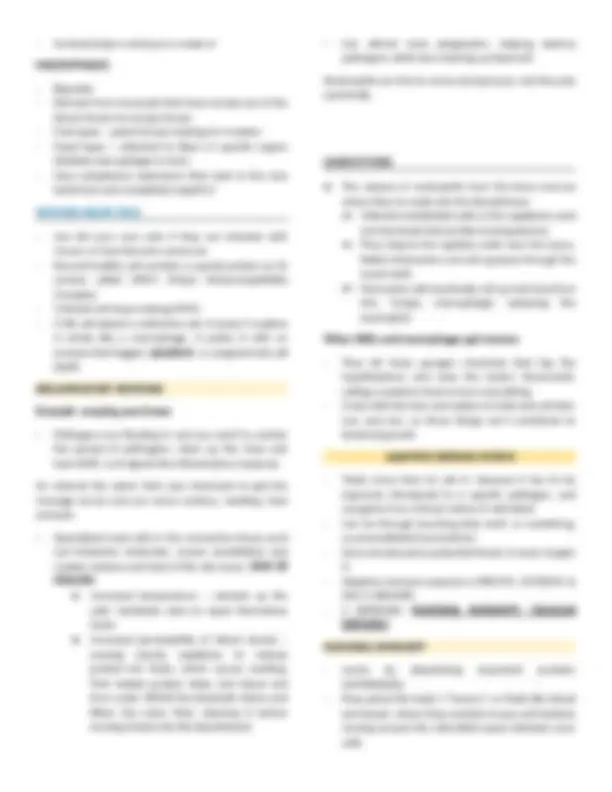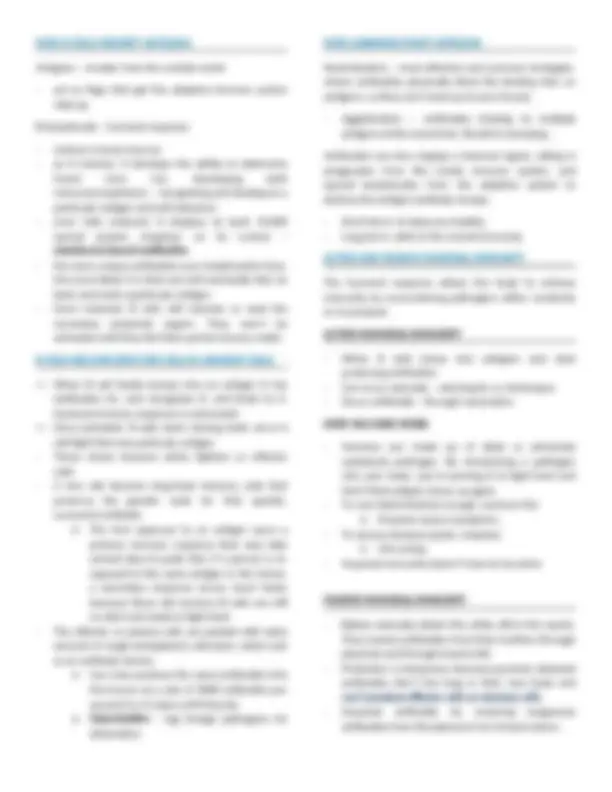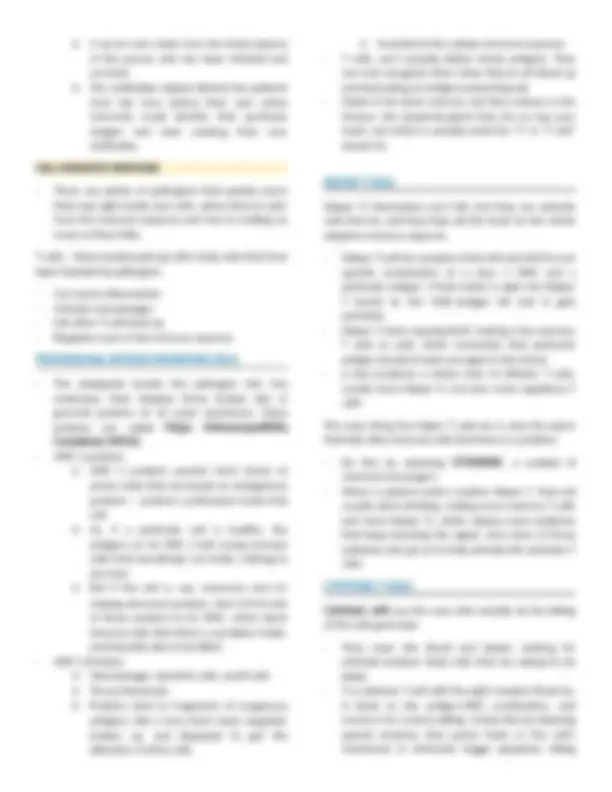





Study with the several resources on Docsity

Earn points by helping other students or get them with a premium plan


Prepare for your exams
Study with the several resources on Docsity

Earn points to download
Earn points by helping other students or get them with a premium plan
Community
Ask the community for help and clear up your study doubts
Discover the best universities in your country according to Docsity users
Free resources
Download our free guides on studying techniques, anxiety management strategies, and thesis advice from Docsity tutors
Brief lecture notes of Lymphatic and immune system
Typology: Lecture notes
Uploaded on 01/24/2023
2 documents
1 / 6

This page cannot be seen from the preview
Don't miss anything!




i. Origins Of The Lymphatic System: Capillary Beds ii. Lymphatic Structure a. Lymph b. Lymphatic Vessels c. Lymphoid Organs iii. What Does Lymphatic System Do? II. IMMUNE SYSTEM i. Innate Defense System a. External Barricade b. Internal Innate Defenses c. Inflammatory Response ii. Adaptive Defense System a. Humoral Immunity b. Cell-Mediated Immunity LYMPHATIC SYSTEM
Detect, deflect, destroy INNATE, OR NONSPECIFIC, DEFENSE SYSTEM
Antigens – invader from the outside world
Neutralization – most effective and common strategies, where antibodies physically block the binding sites on antigens, so they can’t hook up to your tissues.
o A serum was made from the blood plasma of the person who has been infected and survived. o The antibodies helped defend the patients from the virus before their own active immunity could identify that particular antigen and start creating their own antibodies. CELL-MEDIATED RESPONSE